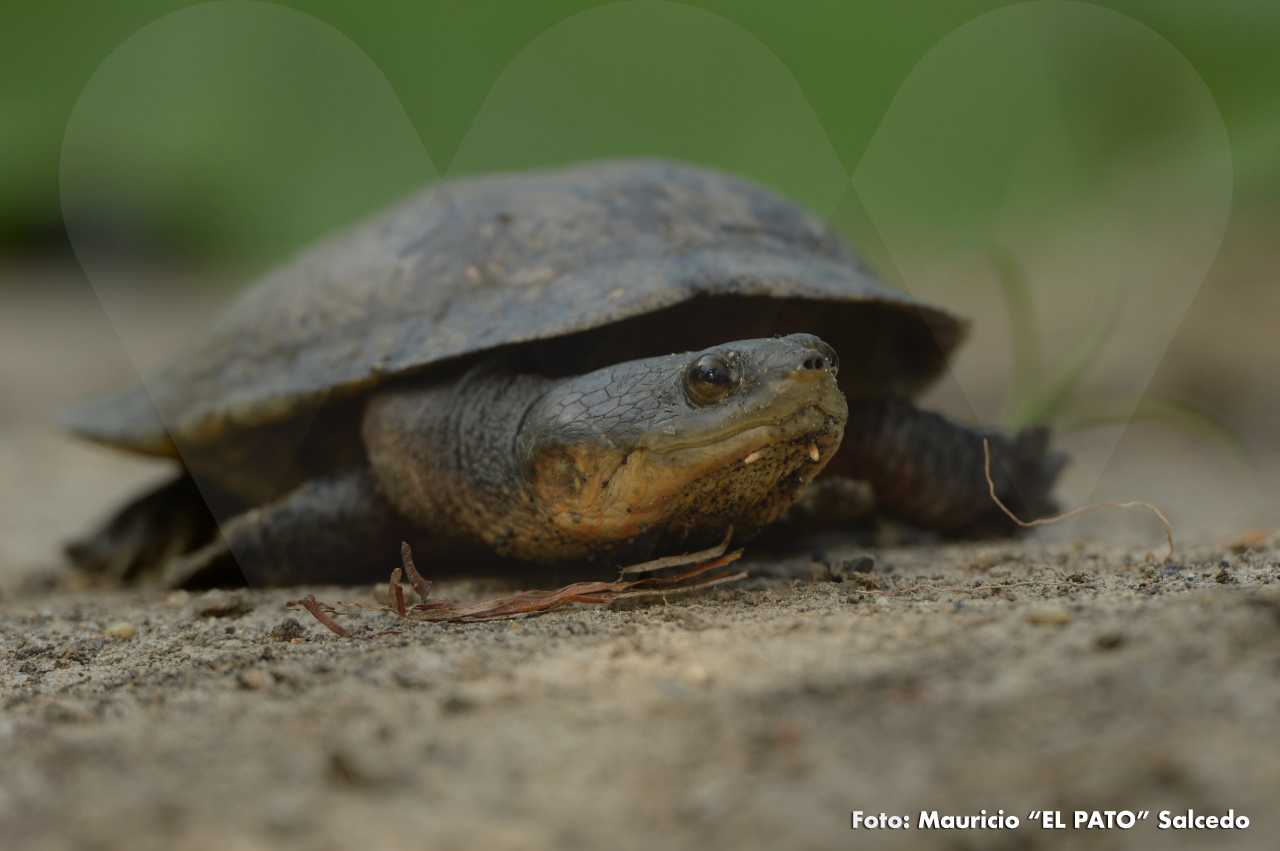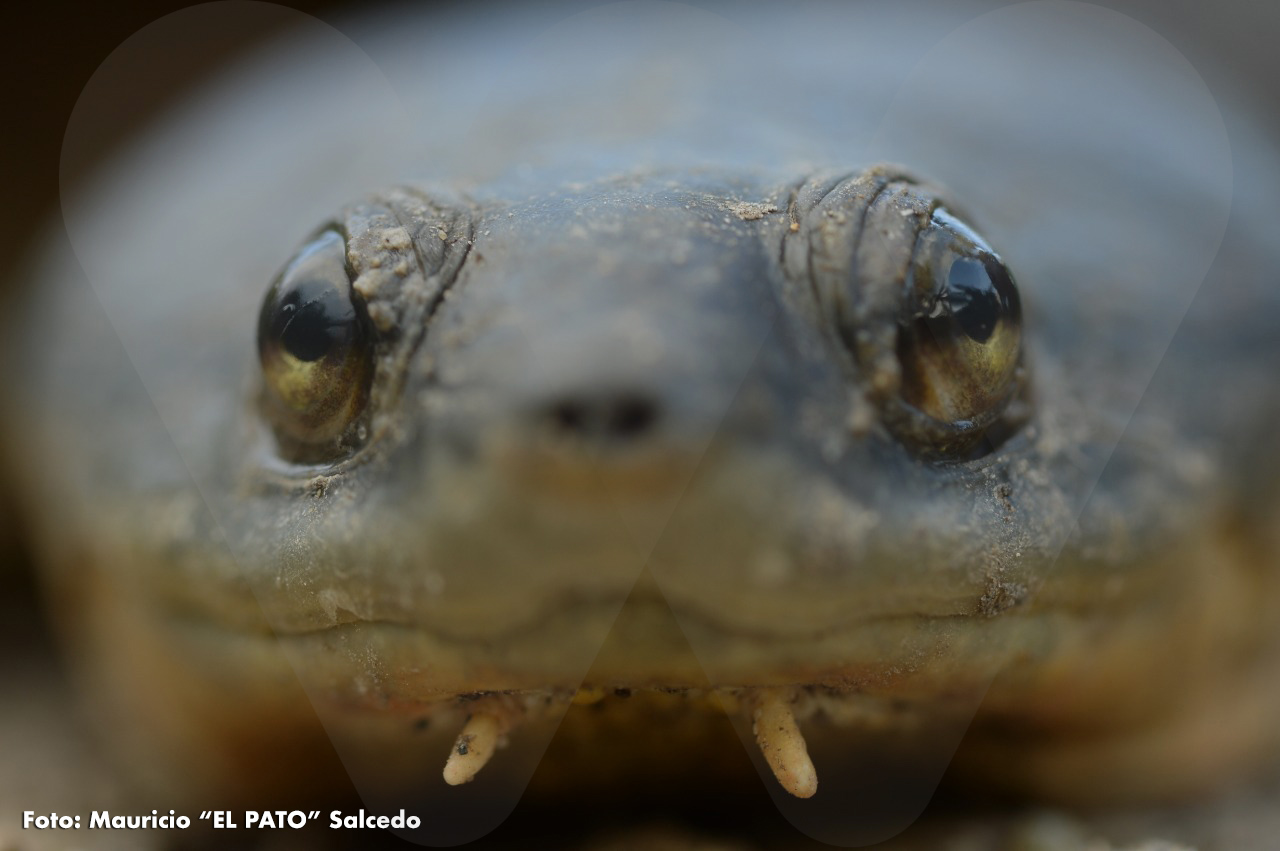In a 120 hectare terrain, WCS Colombia, in cooperation with Turtle Survival Alliance (TSA) y Rainforest Trust, will stimulate the healthy conservation and reproduction of the reptile, whose wild populations are isolated due to the deterioration of the dry forest, its main habitat. The species Mesoclemmys dahli, as it is scientifically known, only lives in the Colombian Caribbean (endemic).

The destruction of the dry forest in the Atlantic Coast departments, due to the introduction of agriculture and stockbreeding and the construction of infrastructure, has not only affected valuable flora species, but also the fauna living there. And one of these affected animals is Dahl´s toad-headed turtle (Mesoclemmys dahli), endemic to the Colombian Caribbean (it is the only place in the world where it lives) and historically adapted to this ecosystem.
As per studies on landscape genetics recently done, this reptile, critically endangered according to the International Union for the Conservation of Nature (IUCN), was affected due to the fragmentation of the forest and the ensuing division of its populations into, at least, six big groups that are now isolated and whose individuals have had to reproduce among relatives (inbreeding). This has increased the probability of defective genes that could derive in diseases, physical changes or even death.
And, to reduce this risk, WCS Colombia, in cooperation with Turtle Survival Alliance (TSA) y Rainforest Trust, recently purchased a 120 hectare rural parcel, located in San Benito Abad (Sucre), that will be transformed into a reserve zone for Dahl´s toad-headed turtle.
Germán Forero, scientific director of WCS Colombia, says that this species lives a very peculiar situation as, despite its critical state, its presence has not been registered in any conservation zone. This, therefore, would be the first and only area in the country dedicated to its protection.
“Our most urgent task, in view of the degradation of the dry forest, is to deal with the problem of inbreeding. Due to the extremely critical conditions and the absence of an identified population in an area with good conditions, we decided that our only alternative was to establish a reserve where we could handle all these variables and contribute to the conservation of the turtle”, explained Germán. Consequently, he informed, their work will also be focused on the recuperation of part of the ecosystem.

“One of the first steps will be to design a restoration program, which must include rehabilitation and expansion of the wetlands and dry forests that still exist in our reserve. This is long-term work, as we want this terrain to radiate its effect towards other sites, the community to be involved in its management and its sustainable use and neighboring owners to join the initiative of Dahl´s toad-headed turtle conservation and the recuperation of gallery forests” says Germán.
The objective is to improve the connectivity of the reserve with other areas that may have individuals and contribute, little by little, to the regeneration of the gene flow among populations. All this would include the transformation of the site, in the mid-term, into a reserve of the civil society.
Individuals from different population groups, never related, will be intentionally taken to the site, for a healthy and appropriate interchange. Taking advantage of the fact that turtles, due to their size and weight, can intentionally move from one place to another with greater ease, some groups will be taken to the reserve, to introduce new genes and increase diversity. As this requires some previous permits, the translocation could begin in one year approximately.
And it makes total sense in as much as, in view of the disappearance of their natural surroundings, many Mesoclemmys dhali have had to adapt to different environmental conditions, opting to live in pastures where they try to move around without much success. The idea with this protection zone is to recuperate and protect their habitat and also give the isolated turtles, already living in transformed sites, more opportunities for reproduction.
Monitoring will establish if population starts to increase with protection and, in the process, could transform the project into a test that could clear up doubts and perfect decision making for Dahl´s toad-headed turtle in other areas of the country´s northern region.